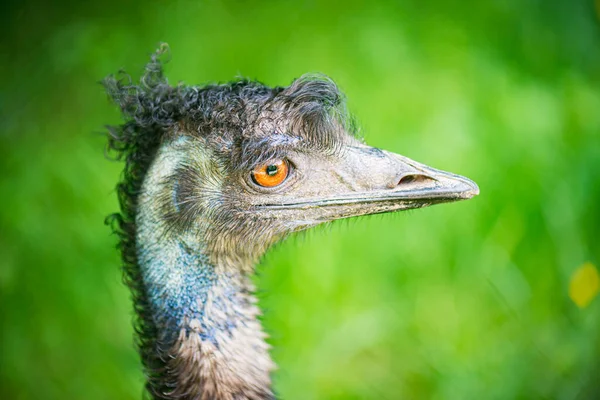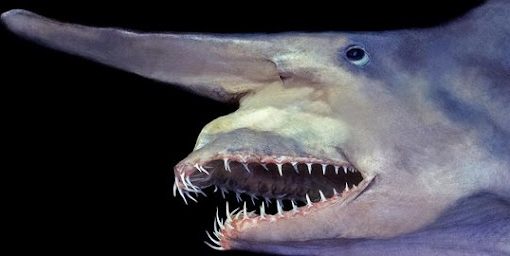Dromaius novaehollandiae: A Comprehensive Guide to the Emu’s Biology and Behavior

The emu, scientifically known as Dromaius novaehollandiae, is one of the most iconic and fascinating creatures native to Australia. This large, flightless bird holds a significant place in Australian culture and ecology, being both a symbol of the country’s unique wildlife and an important part of its natural environment. As the world’s second-largest bird, the emu’s unique characteristics and behavior make it a subject of intrigue and admiration. In this article, we will explore the biology, behavior, history, and conservation of the emu, shedding light on why this bird has become an emblem of Australia.
Table of Contents
ToggleTaxonomy and Classification dromaius novaehollandiae

The emu belongs to the order Palaeognathae, a group that includes large, flightless birds like ostriches and rheas. The scientific name, Dromaius novaehollandiae, derives from Latin, where Dromaius means “runner” and novaehollandiae refers to New Holland, an old name for Australia. The dromaius novaehollandiae is a member of the family Casuariidae, which it shares with the cassowary, another large flightless bird found in northern Australia, New Guinea, and nearby islands.
Though the emu shares some similarities with the ostrich, such as its flightless nature and large size, it is distinct in both physical traits and behavior. Unlike the ostrich, which can be found in Africa, the dromaius novaehollandiae is endemic to Australia, where it thrives in a variety of environments, from coastal plains and forests to the dry interior Ruangwd.
Physical Characteristics
dromaius novaehollandiae are large, flightless birds, standing on average between 1.5 and 1.9 meters (5 to 6.2 feet) tall and weighing between 30 to 55 kilograms (66 to 121 pounds). Their long legs, designed for running at great speeds, make them well-adapted for life in open grasslands and forests. The dromaius novaehollandiae powerful legs allow it to reach speeds of up to 50 kilometers per hour (31 miles per hour), making it one of the fastest birds on land.
The emu’s plumage is soft and shaggy, with feathers that vary in color from dark brown to grayish-brown, often with a blueish tint on the neck and head. This plumage is not a true feather structure but rather a unique type of feather called a “double plume,” with two barbs. The texture of the feathers provides some insulation, allowing the emu to regulate its body temperature in the extreme climates of Australia, particularly in the hot, arid interior.
dromaius novaehollandiae also have small, rounded wings, which they do not use for flight. Instead, these wings serve as a way to maintain balance while running. Their large, dark eyes help them keep a watchful lookout for predators, and their keen sense of vision is one of their primary ways of detecting danger in their environment.
Habitat and Distribution
Emus are found across almost all of Australia, with the exception of Tasmania and some of the most densely forested areas. They are highly adaptable and can be found in a wide range of habitats, from open forests, grasslands, and woodlands to the sparse deserts of the outback. They are often seen in areas with access to water sources, such as rivers and lakes, but they can also survive in dry environments for extended periods by adapting to the scarcity of water.
Although emus are capable of living in diverse habitats, they tend to avoid extreme environments such as deserts or heavily urbanized areas. They prefer open spaces where they can forage for food, especially areas with abundant grasses, seeds, fruits, and insects.
Diet and Feeding Behavior
dromaius novaehollandiae are omnivorous, with a diet that consists of a wide variety of plant material, fruits, seeds, and insects. They are opportunistic feeders, consuming whatever is available depending on the season and location. Emus are known to eat the seeds of many native Australian plants, including grass seeds, and they will also consume berries, leaves, and roots. They are particularly adept at foraging for food in the Australian outback, where food resources can be scarce.
In addition to plant material, emus also eat insects, including beetles, ants, and termites, which provide them with important sources of protein. Their strong beaks and long necks allow them to forage on the ground and even dig for food when necessary. Although they can go without water for extended periods, emus are known to drink from waterholes when they are available, often traveling great distances to reach these sources of water.
Reproduction and Life Cycle
The breeding season for emus typically occurs during the Australian summer, from November to January. During this time, male emus become particularly active, displaying courtship behavior to attract potential mates. Male emus are the ones responsible for incubating the eggs and raising the young, which is a unique trait among birds.
After mating, the female dromaius novaehollandiae lays large, dark green eggs, typically numbering between 7 and 15. The eggs are about the size of a grapefruit and are covered in a tough, leathery shell. Once the eggs are laid, the male emu takes over the incubation process. He incubates the eggs for about 8 weeks, keeping them warm and protected. During this time, the male emu becomes highly protective of the nest, rarely leaving to forage for food. Instead, he survives on stored fat reserves and will occasionally drink water.
After hatching, the chicks are precocial, meaning they are born with their eyes open and are able to walk and run within hours of birth. The male emu continues to care for the chicks for several months, providing them with protection and guidance as they grow. The chicks will gradually become more independent and begin to forage for food on their own.
Emus can live up to 10 to 20 years in the wild, though their lifespan is often shorter in captivity. Despite their large size and speed, emus face various natural predators, including dingoes and large birds of prey. However, their most significant threats come from habitat loss and human activities.
Behavior and Social Structure
Emus are generally solitary birds, although they may form small groups during the breeding season or when food is abundant. They are not territorial, and their interactions with one another are usually peaceful. However, they are known to engage in occasional disputes over food or mates, with males often displaying dominance through displays of aggression.
One of the emu’s most notable behaviors is its running ability. Emus are fast runners and can cover large distances in search of food, water, or a mate. Despite their size, they are highly agile and can navigate through dense vegetation or rough terrain with ease.
Emus also communicate with each other through a variety of vocalizations. Their calls include low, booming sounds that can be heard over long distances. These calls are often used to communicate with other emus during mating season or to signal the presence of a predator.
Conservation and Threats

While emus are not currently listed as endangered, they face several threats to their populations. Habitat loss due to agricultural expansion, urbanization, and land development is one of the primary threats to emu populations. In addition, climate change and the resulting droughts can also impact the availability of food and water sources, which could affect dromaius novaehollandiae survival in some regions.
In some parts of Australia, emus have been involved in conflicts with farmers, particularly in areas where crops are grown. Emus are known to damage crops, leading to efforts by farmers to control their populations. However, in recent years, there has been increasing recognition of the importance of conserving the emu as a part of Australia’s natural heritage.
The Australian government has implemented conservation measures to protect dromaius novaehollandiae populations, including the creation of wildlife reserves and conservation programs. Efforts to protect dromaius novaehollandiae habitats and ensure that they have access to sufficient food and water sources have been successful in stabilizing dromaius novaehollandiae populations in some regions.
Conclusion
The emu, Dromaius novaehollandiae, is a fascinating and iconic species that embodies the unique characteristics of Australian wildlife. With its impressive size, running ability, and distinctive behavior, the emu has captured the imagination of people around the world. It holds cultural significance in Australia, where it is seen as a symbol of the nation’s natural heritage and resilience. Despite facing threats from habitat loss and human activities, the emu continues to thrive in the wild, and efforts to conserve its populations are ongoing. The emu’s presence in Australia remains a testament to the country’s diverse and resilient wildlife.



